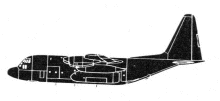Incident Overview
Description
A Cessna 550 Citation II, registration P2-TAA, was conducting a charter flight from Port Moresby-Jackson’s International Airport, PNG, to Bwagaoia Aerodrome, Misima Island, PNG. There were two pilots and three passengers on board for the flight. The approach and landing was undertaken during a heavy rain storm over Bwagaoia Aerodrome at the time, which resulted in standing water on runway 26. This water, combined with the aircraft’s speed caused the aircraft to aquaplane. There was also a tailwind, which contributed the aircraft to landing further along the runway than normal. The pilot in command (PIC) initiated a baulked landing procedure. The aircraft was not able to gain flying speed by the end of the runway and did not climb. The aircraft descended into terrain 100 m beyond the end of the runway. The aircraft impacted terrain at the end of runway 26 and the aircraft was destroyed by a post-impact, fuel-fed fire. The copilot was the only survivor. CONTRIBUTING SAFETY FACTORS: – The operator’s processes for determining the aircraft’s required landing distance did not appropriately consider all of the relevant performance factors. [Minor safety issue] – The operator’s processes for learning and implementing change from the previous runway overrun incident were ineffective. – The flight crew did not use effective crew resource management techniques to manage the approach and landing. – The crew landed long on a runway that was too short, affected by a tailwind, had a degraded surface and was water contaminated. – The crew did not carry out a go-around during the approach when the visibility was less than the minimum requirements for a visual approach. – The baulked landing that was initiated too late to assure a safe takeoff. Other safety factors: – The aircraft aquaplaned during the landing roll, limiting its deceleration. – The runway surface was described as gravel, but had degraded over time. [Minor safety issue] – The weather station anemometer was giving an incorrect wind indication. [Minor safety issue] – The unreliability of the communications facilities prevented the weather observer from transmitting regular weather updates to Port Moresby. [Minor safety issue] – There were a number of printing errors in the aircraft manufacturer’s C550 performance and supplementary information charts. [Minor safety issue]
Source of Information
http://www.abc.net.au/news/stories/2010/09/01/2999923.htm?section=justin, http://www.atsb.gov.au/publications/investigation_reports/2010/aair/ae-2010-068.aspxhttp://www.abc.net.au/news/stories/2010/09/01/2999923.htm?section=justin, http://www.atsb.gov.au/publications/investigation_reports/2010/aair/ae-2010-068.aspxShare on:




